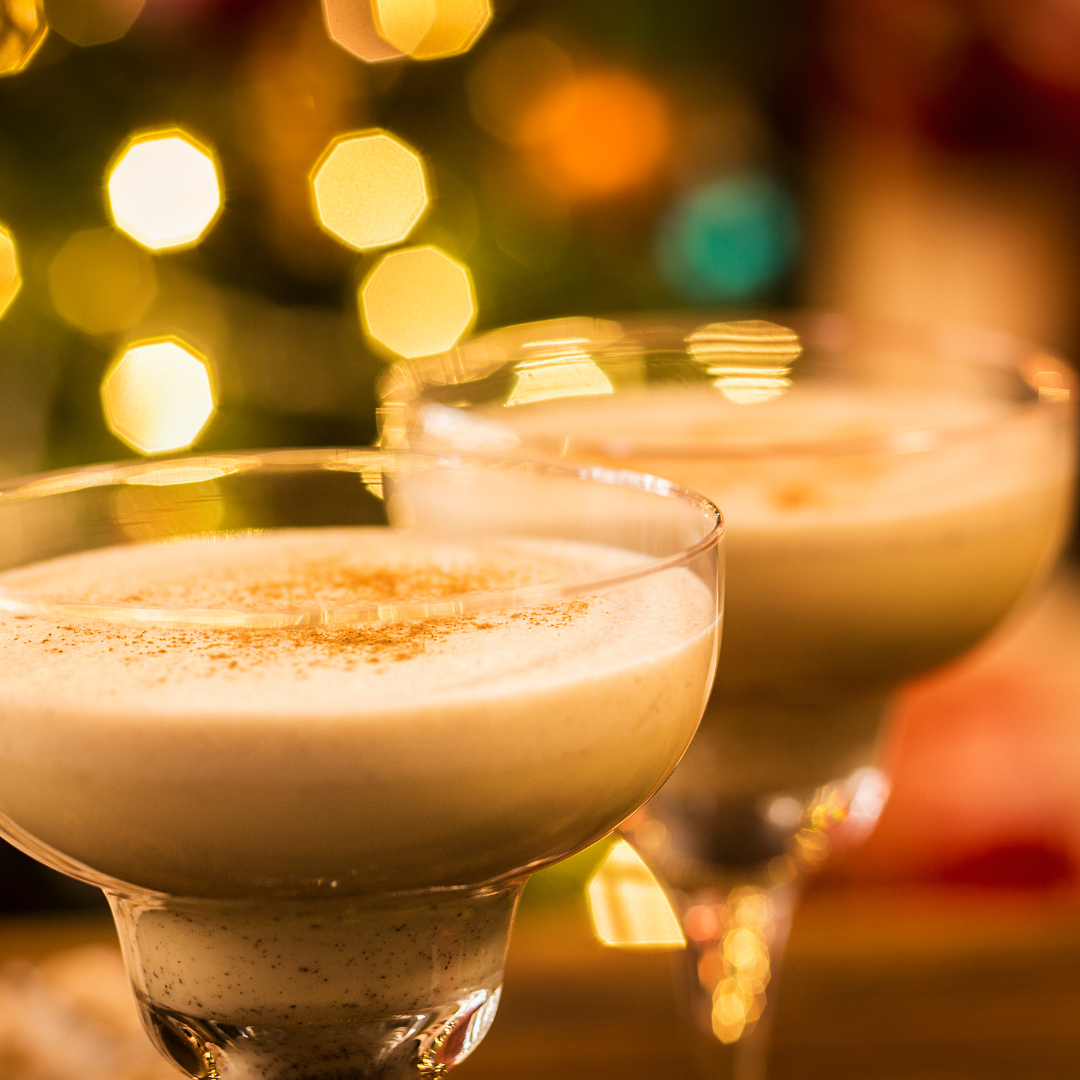Apr 28th 2023 - Team
What Is Eggnog? Origins, How to Make it and More!
You may associate eggnog with the Christmas of your youth or the boozy cocktail that got you through that last-minute social event, but have you ever paused to ask yourself: what exactly is eggnog, that foamy, cheery beverage? From the best liquor to spike it with to the best way to create homemade eggnog, we've got you covered.
What Is Eggnog? What does eggnog consist of?

Eggnog is a festive milk-and-egg beverage typically served at Christmas parties. And this is the perfect occasion to use that great-aunt-given punch bowl. Before modern conveniences like refrigeration and electricity, eggnog was known as milk punch and was reserved for the upper class. Because it was a symbol of wealth, toasts were raised to long life and prosperity whenever it was served.
In the twenty-first century, most people can whip up a batch of eggnog without resorting to expensive store-bought mixes. Eggs, egg yolks, sugar, milk, heavy cream, and vanilla extract are the classic ingredients for eggnog. Brandy and freshly grated nutmeg or cinnamon sticks are common additions.
Read More: Different Types Of Eggs: How To Choose The Right One?
What Does Eggnog Taste Like?

The honeyed sharpness of brandy balances the rich custardy sweetness of the eggnog. Eggnog takes on a slightly spicy and fragrant flavor because of the warm spices customarily placed over top (such as nutmeg, cinnamon, and occasionally even cloves or star anise). The consistency is similar to melted vanilla ice cream rather than watery whole milk. Small crystal or cut-glass tumblers are commonly used because the drink is so decadent.
How to Make Eggnog
- To make the eggnog foundation, mix egg yolks and sugar together until pale and frothy.
- Next, hot milk spiced with cloves and cinnamon is whisked slowly into the egg mixture to temper the eggs and prevent curdling.
- The last step is to heat the eggnog in a saucepan until it thickens. It's similar to custard in texture.
So Why Add Eggs?

Why, with the risk of ingesting bacteria, would anyone choose to drink a concoction that included raw eggs? Pasteurization eliminates the risk of bacteria. Eggs are a common ingredient in baked goods like brownies, cakes, and cookies, as well as in some no-bake desserts like flan, custard, and cheesecake. Eggs can be added to a recipe in three different ways: whole, separated, or white only.
Using whole eggs in a recipe provides structure, which helps the batter stay together and take on the correct texture. The fat content of egg yolks is usually why they are called for in a recipe. Egg yolks have the ability to thicken and enrich tastes, as well as emulsify and bind liquids and fats. Egg whites, on the other hand, provide light and fluffy baked goods like sponge cakes and meringues.
Both the yolks and the whites of eggs are commonly used for these purposes in eggnog. Egg whites mixed in a mixer can give eggnog the airy, foamy consistency that many people love. The rich, creamy flavor of eggnog is a result of the yolks' ability to bind the liquids and fats in the drink together. Adding raw eggs to eggnog may seem weird at first, but the practice has scientific and culinary justifications.
Making Eggnogs Safely
If you want to make your own eggnog, there are a few things to remember. Most eggnog recipes use raw eggs, so follow these guidelines to avoid food poisoning:

- Pasteurized eggs should be used since they have been sanitized using heat or irradiation and are therefore safe for human consumption. Pasteurized eggs eliminate the need for additional cooking when creating eggnog.
- You can use an egg substitute; almost all of them have already been pasteurized and don't need to be heated before use.
- If you're not using pasteurized eggs, you can still get rid of any bacteria by cooking the egg mixture to at least 160 degrees. To speed up the cooling process in the refrigerator, divide the mixture into many small bowls.
- If you decide to make an alcoholic version of eggnog, you should be mindful of both food safety and the amount of alcohol you use. Spiked eggnog, being a sugary beverage, could lead to excessive alcohol consumption. You may always add extra rum, whiskey, or bourbon if you want a stronger flavor, but it's best to start out slow.
The History of Eggnog

Some people absolutely despise eggnog, while others can't understand why someone would ever think to mix raw eggs with milk and booze. The tradition of drinking eggnog dates back to long before the advent of refrigeration.
The word "nog" originally referred to a strong beer or a wooden cup in its original English context, which is where the name "eggnog" originated. The fact that eggs and heavy alcohol are staples in traditional eggnog recipes seems to allude to both of these connotations.
Origins
No one can say for sure when or when eggnog was first made, although historians and food experts agree it was in medieval Britain. The original eggnog was reserved for the upper classes since only they could afford the milk, sherry, and eggs needed to prepare it. To make what was essentially an aromatic eggnog, monks in the Middle Ages dubbed it "posset," and the wealthy typically raised glasses of it to their health and prosperity.
Lack of refrigeration probably led to eggnog becoming linked with the holidays. Eggnog gained popularity as a beverage in the early American colonies. Farmers and regular people alike have greater access to cows and chickens as a result of the abundant farming prospects. Eggs and milk from cows and chicks are necessary components of eggnog.
Different Types of Variations
The history of eggnog does not begin and end in the Americas. Jamaica, a nearby island nation, serves a nearly identical drink with a rummy flavor. Authentic Jamaican eggnog requires a rum matured for at least four years in white oak barrels and created with Jamaican molasses.
The Japanese have their own version of eggnog they call tamagozake, which has gained popularity around the world. This drink is more well-known for its therapeutic characteristics, such as easing sore throats and reducing the common cold, and is made by mixing raw eggs and sugar into heated sake.
Eggnog comes in a variety of flavors and preparations from many cultures:

- Æggekop in Denmark
- Chilled camel’s milk in the United Arab Emirates
- Coquito from Puerto Rico
- Italian bombardino
- Crème de Vie in Cuba
- Jamaican eggnog
- Thai milk tea
- Mexican rompope
- Sabajón in Columbia
Eggnog is a holiday beverage that is rarely available outside of the holiday season. It's easy enough to whip up on your own, so you can enjoy it whenever you choose.

